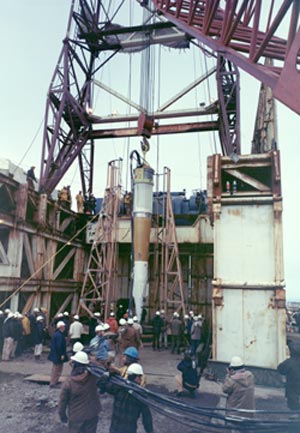Cannikin (nonfiction): Difference between revisions
No edit summary |
No edit summary |
||
| Line 9: | Line 9: | ||
Cannikin was preceded by a smaller test weapon on October 2, 1969, code-named Milrow, part of the Operation Mandrel nuclear test series. | Cannikin was preceded by a smaller test weapon on October 2, 1969, code-named Milrow, part of the Operation Mandrel nuclear test series. | ||
In 1965, a single nuclear test, Long Shot, was carried out on the island for the purposes of seismic test detection development, under program Vela Uniform. | In 1965, a single nuclear test, [[Long Shot (nuclear test) (nonfiction)|Long Shot]], was carried out on the island for the purposes of seismic test detection development, under program Vela Uniform. | ||
== In the News == | == In the News == | ||
| Line 19: | Line 19: | ||
== Nonfiction cross-reference == | == Nonfiction cross-reference == | ||
* [[Long Shot (nuclear test) (nonfiction)]] | |||
External links: | External links: | ||
Revision as of 20:58, 4 November 2017
Cannikin was an underground nuclear weapons test performed on November 6, 1971, on Amchitka island, Alaska, by the United States Atomic Energy Commission.
The experiment, part of the Operation Grommet nuclear test series, tested the unique W71 warhead design for the LIM-49 Spartan anti-ballistic missile.
With an explosive yield of almost 5 megatons of TNT (21 PJ), the test was the largest underground explosion ever detonated by the United States.
The Cannikin test faced considerable opposition on environmental grounds. The campaigning environmental organization Greenpeace grew out of efforts to oppose the test.
Cannikin was preceded by a smaller test weapon on October 2, 1969, code-named Milrow, part of the Operation Mandrel nuclear test series.
In 1965, a single nuclear test, Long Shot, was carried out on the island for the purposes of seismic test detection development, under program Vela Uniform.
In the News
Fiction cross-reference
Nonfiction cross-reference
External links:
- Cannikin @ Wikipedia
